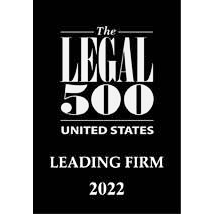CRAIG P. HOFFMAN and KEVIN E. NOLT, February, 2020
Qualified retirement plans are subject to a number of administrative changes, document requirements and other deadlines effective with or during the 2020 calendar/plan year, especially in light of the Setting Every Community Up for Retirement Enhancement Act of 2019 (SECURE). The following article summarizes these changes impacting both defined benefit pension plans and defined contribution plans (e.g., 401(k) and 403(b) plans).
403(b) Plan Restatement Deadline
A sponsor of a 403(b) plan who wants to adopt a preapproved prototype or volume submitter plan document and obtain retroactive reliance on the plan’s Internal Revenue Service (IRS) opinion letter or advisory letter, as applicable, must adopt a preapproved document that complies with the requirements of Section 403(b) of the Internal Revenue Code (the “Code”) and the applicable IRS regulations by March 31, 2020. Preapproved 403(b) documents have been available since the IRS opened up the determination letter program for 403(b) plans in 2013.
The March 31, 2020 deadline also represents the end of the “remedial amendment period” during which a plan sponsor may self-correct plan provisions that violate the 403(b) rules by adopting either a compliant individually designed document or a preapproved document. To take advantage of the remedial amendment period, the plan sponsor must have adopted a good faith written 403(b) plan by December 31, 2009 (or by the effective date of the plan, if later).
Plan sponsors may only self-correct plan document failures during this remedial amendment period (not operational failures). An example would be a failure to include language limiting the participants’ annual additions to the Code Section 415(c) limit. A plan sponsor who doesn’t meet the March 31, 2020 deadline will be able to correct a plan’s violations only through the IRS’s Voluntary Correction Program (VCP), which is a part of the Employee Plans Compliance Resolution System (EPCRS) described in Revenue Procedure 2019-19.
Defined Benefit Plan Restatement Deadline
If a plan sponsor previously adopted a preapproved prototype or volume submitter defined benefit plan document, or wants to adopt one now, it must adopt a restated document by April 30, 2020 to be covered by the IRS’s second six-year remedial amendment period.
In the spring and summer of 2018, the IRS issued opinion and advisory letters for preapproved defined benefit plans that were restated for changes in plan qualification requirements listed in Notice 2012-76 (2012 Cumulative List). A plan sponsor using a preapproved plan document to restate a plan during this second cycle will be required to adopt the plan by April 30, 2020. This is also the deadline for a sponsor to submit an individual determination letter request for its defined benefit preapproved plan document if a change was made to the model language.
The IRS also announced, in Revenue Procedure 2020-10, that the third six-year remedial amendment cycle for preapproved defined benefit plans will begin on May 1, 2020, and will end on January 31, 2025. Preapproved plan providers will have from August 1, 2020 to July 31, 2021 to submit their documents to the IRS for the third remedial amendment cycle. The IRS will announce at a later date the deadline for plan sponsors to adopt the approved plans.
Cash Balance Plan Determination Letter Application Window
The IRS reopened its determination letter program for statutory hybrid plans (e.g., cash balance plans) on a temporary basis from September 1, 2019 until August 31, 2020, as set forth in Revenue Procedure 2019-20. The IRS determination letter program allows sponsors of qualified retirement plans to obtain a ruling that the form of their plan document is in compliance with the qualification provisions of the Code. While not required, obtaining an IRS determination letter has been, historically, a recommended best practice for all individually designed qualified retirement plans. The IRS discontinued the determination letter program for individually designed plans effective January 1, 2017, except for initial qualifications, plan terminations and other circumstances as determined by the IRS.
The IRS has now determined that special circumstances warrant opening the program for cash balance plans. The IRS is offering this limited window in recognition that cash balance plans were unable to obtain a determination letter that takes into account final hybrid plan regulations issued in 2014 and 2015. Revenue Procedure 2019-20 also provides that the IRS will not impose any sanctions for plan document failures, relating to implementation of the final hybrid plan regulations, that are discovered by the IRS in reviewing a determination letter application submitted during this period. If the IRS discovers any other plan document failures, a reduced sanction equal to the applicable user fee under EPCRS will apply (e.g., $3,500 for larger plans) as long as the amendment that resulted in the failure was adopted timely and in good faith.
The IRS also reopened the determination letter program for plans that are merged in connection with a corporate merger, acquisition, or other similar business transaction involving two or more entities that were previously unrelated. This opportunity to request a determination is not subject to a limited window period, but will be ongoing. Plan sponsors wishing to take advantage of this opportunity should consult with counsel as the deadline for submission is subject to strict timing rules based on the date of the merger, acquisition or similar transaction and the date the plans were merged.
Updated Mortality Rates Applicable to Defined Benefit Plans
The IRS has updated the mortality improvement rates and static mortality tables for single employer defined benefit pension plans for 2020 in Notice 2019-26, released on March 22, 2019. These updated mortality improvement rates and static tables apply for calculating the funding target and other items under Code Section 430(h)(3)(A) of the Code and ERISA Section 303(h)(3)(A). Notice 2019-26 also includes a modified unisex version of the mortality tables for use in determining the lump sum minimum present value under Code Section 417(e)(3) and ERISA Section 205(g)(3) for distributions with annuity starting dates that occur during stability periods beginning in the 2020 calendar year. Note that the IRS also has updated the mortality improvement rates and static mortality tables for 2021 in Notice 2019-67, released on December 11, 2019. Plan sponsors should work with their actuaries to understand the impact of these updated rates on their plan funding requirements.
Required Hardship Distribution Changes
The Bipartisan Budget Act of 2018, which was signed into law on February 9, 2018, made some significant changes to the hardship distribution rules applicable to Code Section 401(k) and 403(b) plans, and it directed the IRS to issue regulations. The IRS issued the final regulations on September 23, 2019. While certain changes are optional (e.g. the addition of earnings on pretax deferrals as an eligible source and the elimination of the requirement to first take a loan from the plan), there are two mandatory changes that must be administered for hardship distributions taken on and after January 1, 2020. This means that plan sponsors and service providers must take immediate action and that participant communications should be updated as soon as possible.
The first required change is that an employer may no longer suspend an employee who has received a hardship distribution from contributing to the plan (or any other retirement plan) for 6 months. The final regulations clarify that the elimination of the suspension is not intended to apply to nonqualified deferred compensation plans. Thus, it appears that a plan sponsor may continue to suspend employee contributions to any nonqualified plan, subject to the requirements of Code Section 409A.
The second required change is that an employee must represent (in writing or by an electronic medium, including, for example, an online application or recorded phone line or other forms as prescribed by the IRS) that he or she has insufficient cash or liquid assets “reasonably available” to satisfy the financial need. The final regulations clarify that assets earmarked for another purpose, such as mortgage payments, are not considered reasonably available to the participant. A plan sponsor or administrator may rely on this representation unless it has actual knowledge to the contrary.
These changes could have been implemented in 2019 (and likely were for many plans). They are mandatory for hardship distributions made on and after January 1, 2020. The deadline for amendments to individually designed plans reflecting these required changes (and any optional amendments) is December 31, 2021. While amendments to preapproved plans initially had a due date of the plan sponsor’s tax filing deadline, plus extensions, for the 2020 tax year, the IRS extended the due date to December 31, 2021 in Notice 2019-64.
The SECURE Act
In addition to those new rules and deadlines, 2020 will also bring with it a number of significant law changes that were contained in SECURE, which was added to last year’s budget bill and signed into law on December 20, 2019. Many of the new law’s provisions became effective on January 1, 2020. Consequently, immediate action may be required by participants, plan sponsors, and their service providers.
The changes made to the required minimum distribution rules could prove to be problematic for many plan administrators and recordkeepers. Under SECURE, the age at which required minimum distributions must begin is moved back from 70 ½ to 72. However, it only applies to individuals attaining age 70 ½ after December 31, 2019. In addition, individual account plans (like 401(k) and 403(b) plans) and IRAs will have to distribute all amounts held by the plan or IRA within 10 years of the plan participant’s or IRA owner’s death. An exception is provided for an “eligible beneficiary,” i.e., a surviving spouse, minor child, a disabled or chronically ill individual, or any other beneficiary who is no more than 10 years younger than the participant or IRA owner. This aspect of the new rules is generally effective with respect to individuals who die after December 31, 2019. However, governmental plans have a December 31, 2021, effective date, and collectively bargained plans will apply the new rules to participants dying in calendar years beginning after the expiration of the current collective bargaining agreement or December 31, 2021, if earlier.
Failure to apply the new rules as of their effective date could lead to problems for the plan administrator or IRA custodian. For example, a person who attains age 70 ½ in 2020 and receives a cash-out of his or her account balance would be entitled to rollover the entire distribution. Under the old law, a portion of the cash-out distribution would have been classified as a required minimum distribution that is ineligible for rollover. If the plan were to apply income tax withholding to the distribution using the old rules, the amount withheld would be less than is required. This is because the withholding rate for eligible rollover distributions is 20% while the withholding rate on amounts ineligible for rollover is 10%.
The IRS has indicated that they are aware of compliance challenges presented by the short time period between the enactment of the law and its effective date. IRS Notice 2020-6 indicates they are considering issuing guidance to provide some measure of relief in this area. Nevertheless, plan procedures (and software) should be immediately updated to reflect the new rules to avoid mistakes.
Another 2020 change that may be problematic is a new exemption from the 10% early distribution excise tax for distributions to an individual made during the 1-year period beginning on the date a child of such individual is born or legally adopted. A plan sponsor who wishes to offer in-service distributions for this purpose may do so, but that is not required by the new law. We understand that service providers are still working on the administration of this change and that it may not be made readily available by all providers at this time.
Once again, the manner in which the new law is applied could affect the amount withheld from a qualifying distribution. This is because the new law classifies a qualifying distribution as an “ineligible rollover distribution” (even though the distribution may be “repaid” to an IRA). As previously pointed out, this means a 10% withholding rate would apply rather than the normal 20% rate. It is not entirely clear at this time how the IRS will apply the new law. It is possible that documentation will have to be provided by the participant. The IRS is aware of this issue, and their hope is that some type of clarifying guidance and interim relief will be provided.
Plan sponsors should be aware that a number of other changes in SECURE were effective on its enactment date or in 2020. They include:
- Elimination of the requirement to give an annual “safe-harbor notice” for 401(k) plans that meet the ADP test safe harbor requirement by making non-elective employer contributions (the annual notice must still be given to satisfy the ACP test safe harbor);
- Permitting a 401(k) plan to be amended mid-year to become a safe harbor plan if a 3% qualified non-elective safe harbor contribution is made (or 4% if the amendment is adopted within the period beginning 30 days prior to the end of the plan year and ending on the last day of the next plan year);
- Increasing the limit on the maximum automatic enrollment percentage for a Qualified Automatic Contribution Arrangement (QACA) from 10% to 15%;
- Prohibiting plan loans to participants if made through the use of a credit card;
- Nondiscrimination relief for defined benefit plans which are closed or frozen;
- A new safe harbor that fiduciaries can rely on in doing their due diligence in selecting an annuity provider for their plan; and
- A significant increase in the late filing penalties for Form 5500 and Form 8955-SSA.
2020 is going to be a busy year for plan sponsors and their service providers. There is sure to be much coming in the way of guidance from IRS and DOL, both as a result of SECURE as well as the normal push by federal agencies to finish regulatory projects as a four-year presidential term comes to a close. Hang on, it may be a bumpy ride.




